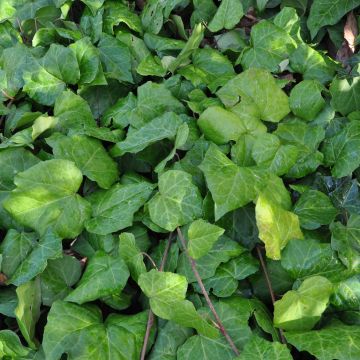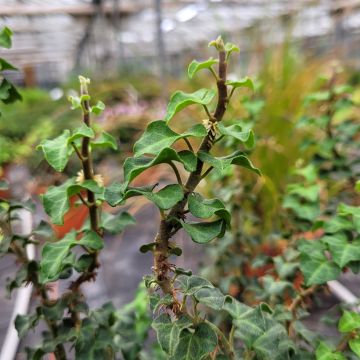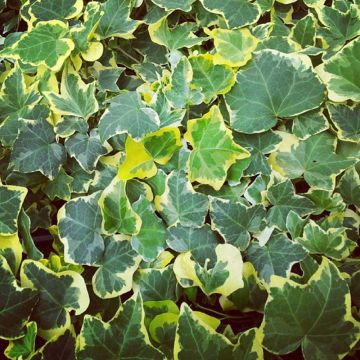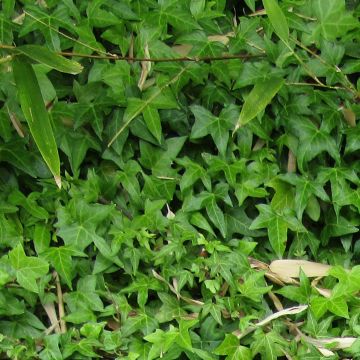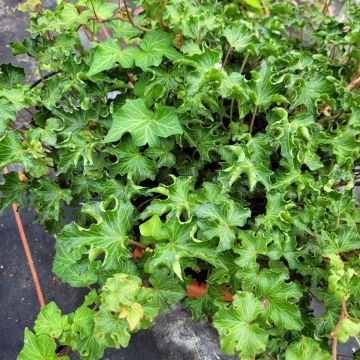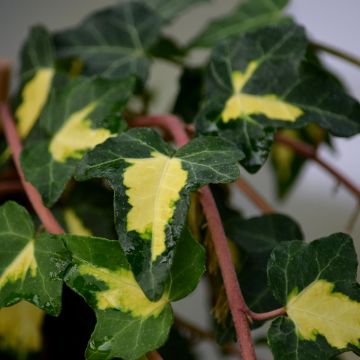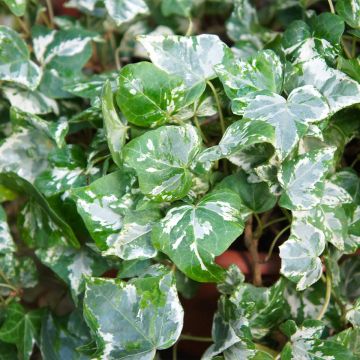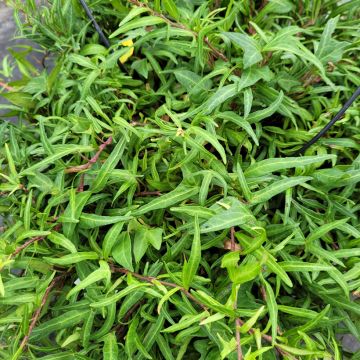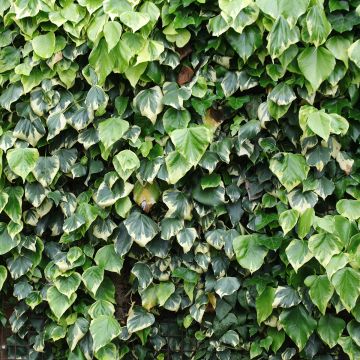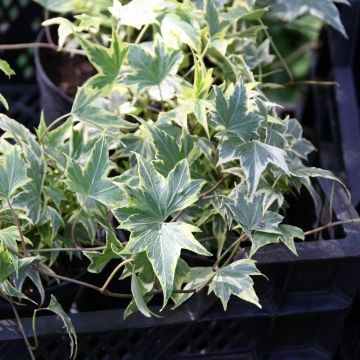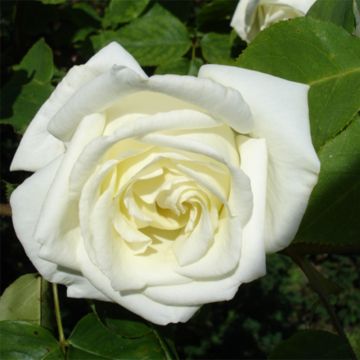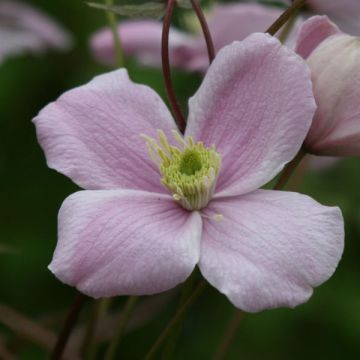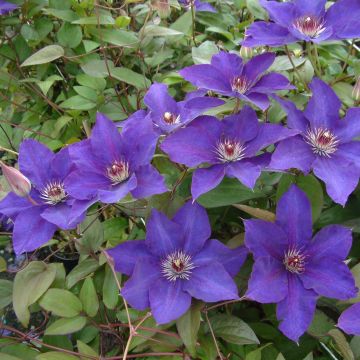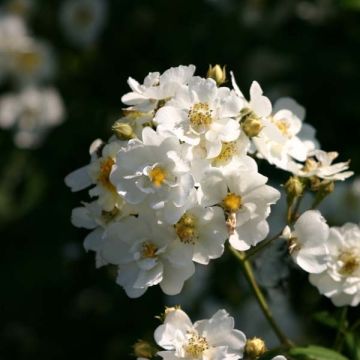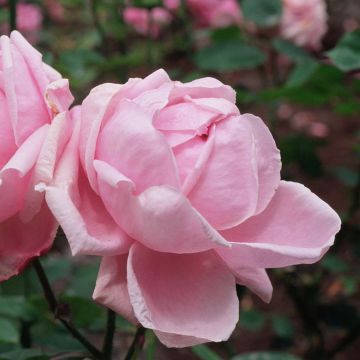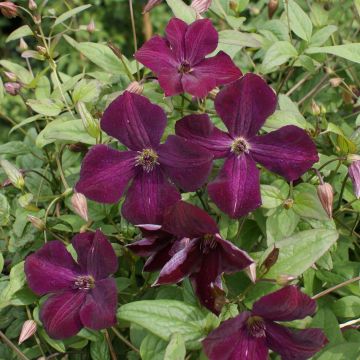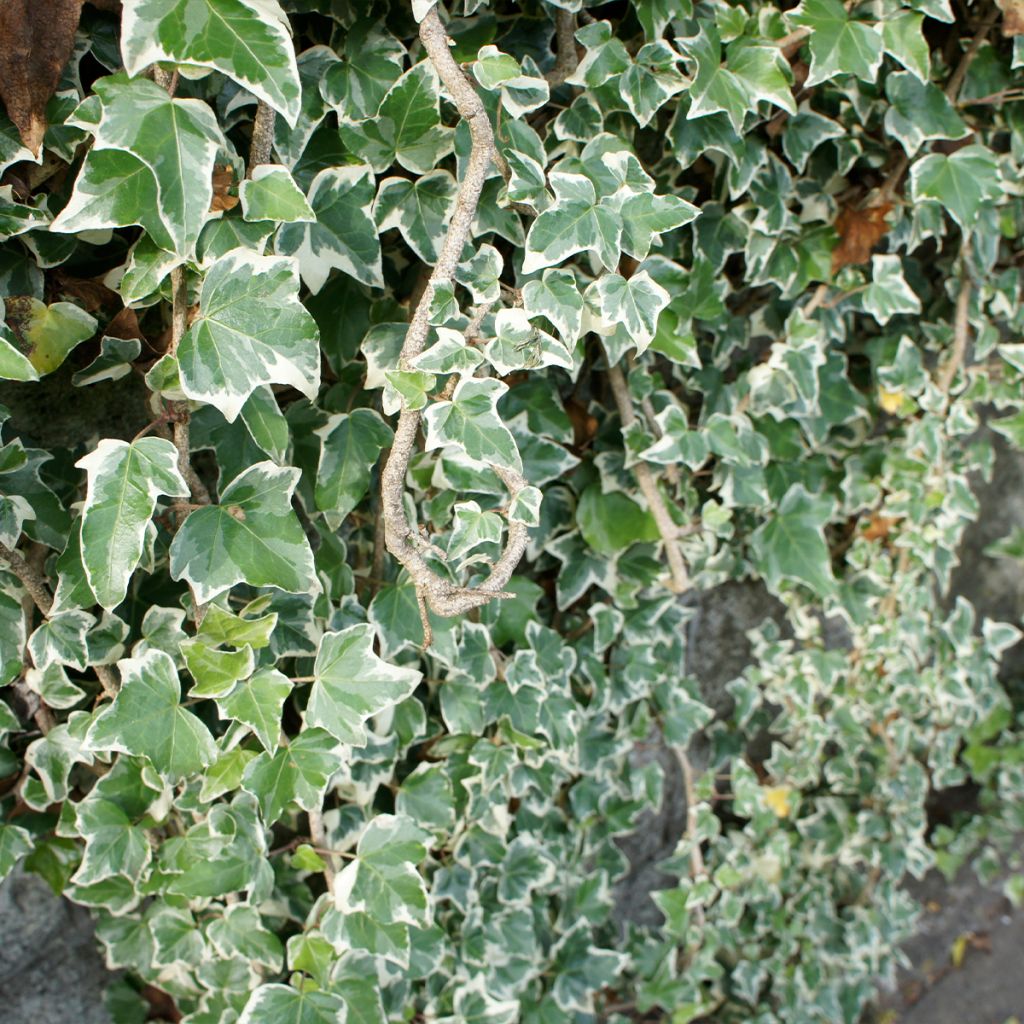

Hedera helix Eva - Common Ivy
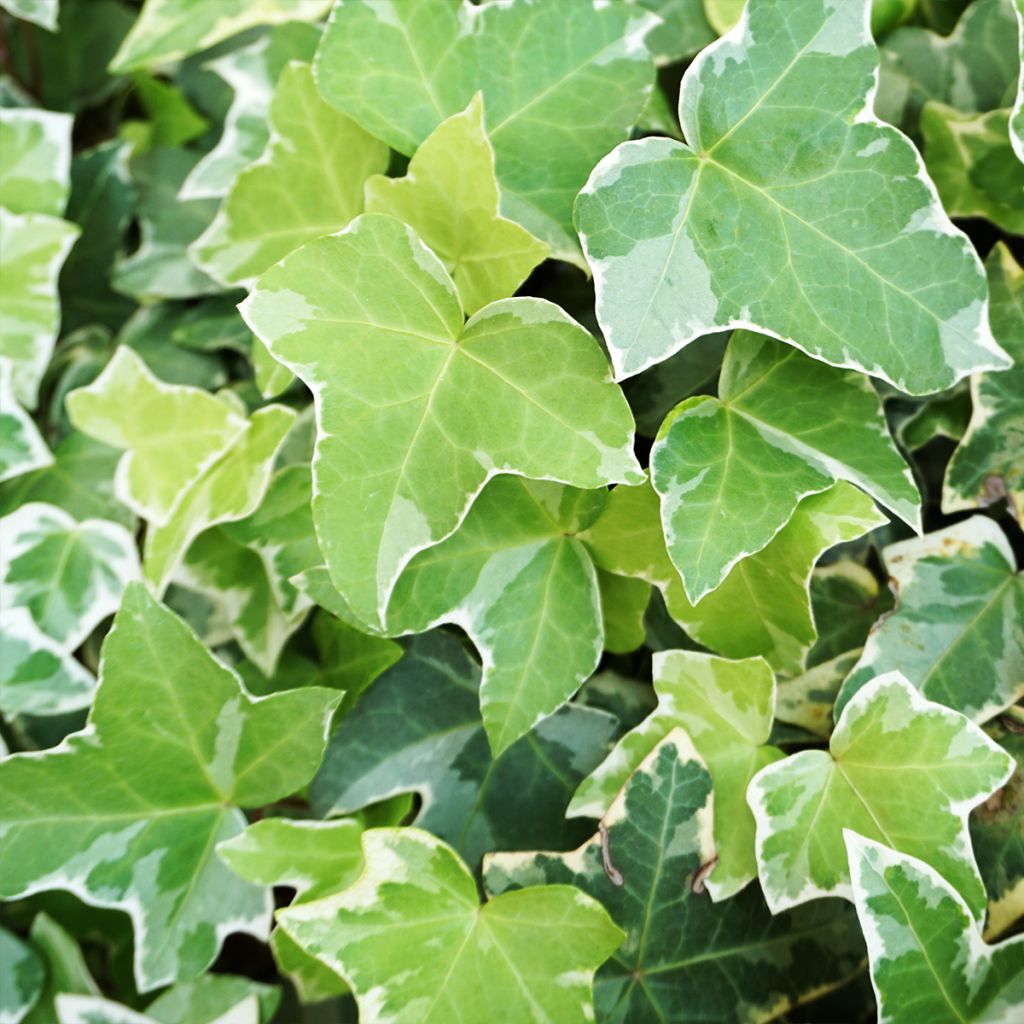

Hedera helix Eva - Common Ivy
Hedera helix Eva - Common Ivy
Hedera helix Eva
English Ivy, Common Ivy, European Ivy
This item cannot be shipped to the selected country
Delivery charge from €5.90
Delivery charge from €5.90
More information
Schedule delivery date,
and select date in basket
This plant carries a 6 months recovery warranty
More information
We guarantee the quality of our plants for a full growing cycle, and will replace at our expense any plant that fails to recover under normal climatic and planting conditions.
From €5.90 for pickup delivery and €6.90 for home delivery
Express home delivery from €8.90.
From €5.90 for pickup delivery and €6.90 for home delivery
Express home delivery from €8.90.
Does this plant fit my garden?
Set up your Plantfit profile →
Description
The Hedera helix Eva is a delightful variety of Common Ivy with beautifully variegated foliage, very hardy and indifferent to soil type. Its small evergreen leaves, trilobed in shape, are colored in two shades of green, with a creamy white margin around the edges. Ornamental all year round, it is perfect for brightening up partially shaded areas of the garden. As the ultimate climbing plant, it can cling to any support to create a beautiful green display, without the risk of becoming invasive, as its growth is limited.
Ivies belong to the Araliaceae family, cousins of Ginseng and Fatsias. This family includes around fifty genera and hundreds of species, and is quite polymorphous, hosting both trees and vines, as well as shrubs and even a few herbaceous plants. The genus Hedera itself consists of about a dozen species, the most common one in our latitudes being our Common Ivy or Hedera helix. This giant of our forests can reach lengths of tens of meters and climb to the tops of the surrounding trees.
Hedera helix 'Eva' is a variety with a much more modest growth than the typical botanical species. It is a sport of 'Harald', another variegated variety (a sport is a spontaneous mutation, which can then be reproduced if it has ornamental value). This 'Eva' Ivy reaches a height of 1.40m (5ft) or 1.50m (5ft) with a width of only 1m (3ft). Its small leaves are composed of 3 lobes, with the central lobe significantly longer than the lateral ones, and measure approximately 4 to 6cm (2in). Mostly green, in two shades, one light and the other darker, they are bordered by a decorative creamy white edge. Evergreen, they are aesthetically pleasing all year round, each one having a unique appearance, both in shape and color distribution. They bring a delicate touch of light to partially shaded or shaded areas of the garden, where this Ivy likes to grow. The stems attach themselves to supports with powerful climbing roots. In autumn, the nectar from its inconspicuous green flowering, in the form of globular inflorescences, is an excellent source of nectar for bees. It is followed by the formation of black berries, toxic to humans but representing an excellent winter food source for birds.
Very hardy, Eva Ivy can withstand temperatures of up to around -20°C and can be grown practically anywhere, without requiring any special maintenance. An ideal plant for small gardens and beginners.
Hedera helix 'Eva' will fit perfectly into a contemporary garden with its graphic foliage. It can decorate the base of a wall, bringing a small romantic touch, a bit wild, without the risk of becoming invasive. It will also be precious for creating the setting of a terrace or balcony, trained on a small wire structure or trailing in variegated drapes along large containers, down to the ground. In the garden, it forms an excellent ground cover capable of discouraging weeds in the long run. Pair it with easy-to-grow woodland perennials such as Epimedium, a genus that is still underutilized despite its many qualities, including the airy charm of its delicate flowers, earning it the nickname "Elf flower". You can also create a charming scene by planting it at the base of a tree trunk surrounded by a carpet of Lungworts, or Evergreen Hellebores with their precious winter flowering.
Report an error about the product description
Hedera helix Eva - Common Ivy in pictures
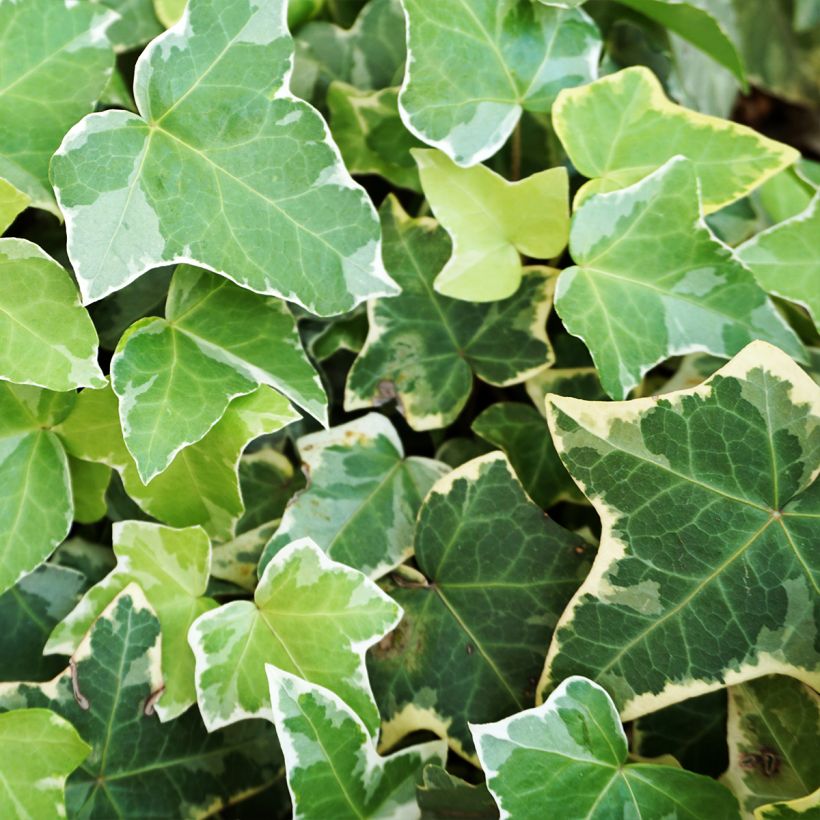

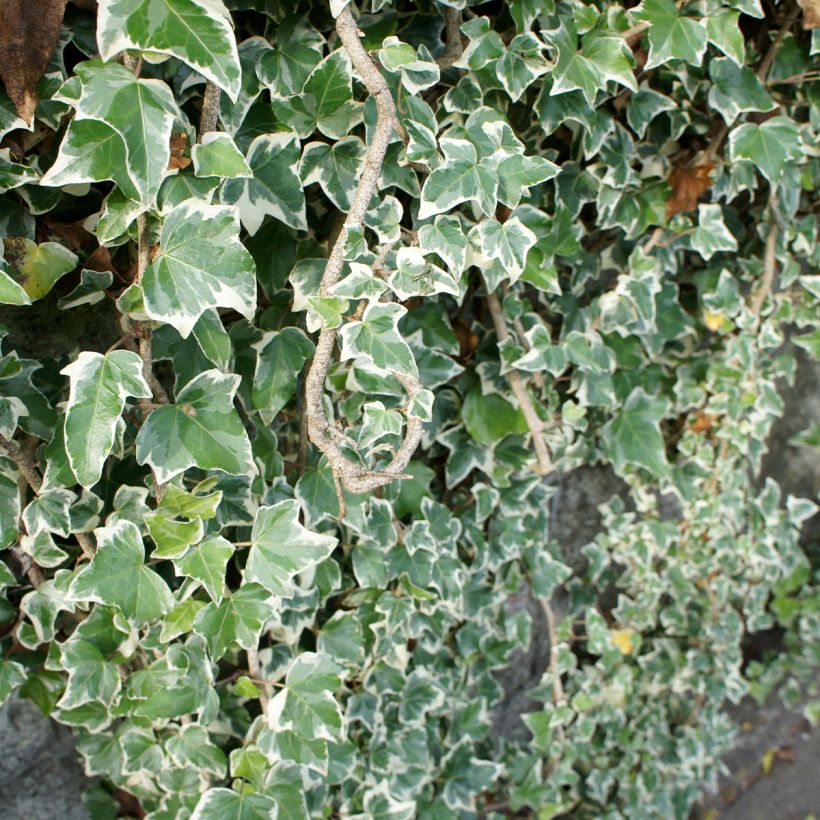

Plant habit
Flowering
Foliage
Safety measures
Botanical data
Hedera
helix
Eva
Araliaceae
English Ivy, Common Ivy, European Ivy
Cultivar or hybrid
ingestion
Cette plante est toxique si elle est ingérée volontairement ou involontairement.
Ne la plantez pas là où de jeunes enfants peuvent évoluer, et lavez-vous les mains après l'avoir manipulée.
Pensez à conserver l'étiquette de la plante, à la photographier ou à noter son nom, afin de faciliter le travail des professionnels de santé.
Davantage d'informations sur https://plantes-risque.info
Other Hedera - Ivy
Planting and care
The Hedera helix 'Eva', which is easy to grow in any ordinary soil, can be planted all year round. It prefers a fertile, moist, well-drained soil, but it is very accommodating (regarding the presence of limestone or clay if the soil is well worked) and quite resistant to drought once established. Ideally, plant it against a wall, in a semi-shaded position sheltered from cold winds to help it establish, and monitor watering during the first 2 years after planting, especially in dry summers. To promote faster growth of young shoots, fix the first ones to the ground (layering). Don't hesitate to rejuvenate the plant by removing old branches. Regular pruning is necessary to shape it. Remove any branches that have non-variegated leaves or those that take on an upright, bushy form.
For container cultivation, mix 7 parts ordinary soil, 3 parts turf, and 2 parts sand. Water regularly and apply fertilizer every month during the growing season. Keep the substrate moist during winter.
Planting period
Intended location
Care
This item has not been reviewed yet - be the first to leave a review about it.
Foolproof climbers
Haven't found what you were looking for?
Hardiness is the lowest winter temperature a plant can endure without suffering serious damage or even dying. However, hardiness is affected by location (a sheltered area, such as a patio), protection (winter cover) and soil type (hardiness is improved by well-drained soil).

Photo Sharing Terms & Conditions
In order to encourage gardeners to interact and share their experiences, Promesse de fleurs offers various media enabling content to be uploaded onto its Site - in particular via the ‘Photo sharing’ module.
The User agrees to refrain from:
- Posting any content that is illegal, prejudicial, insulting, racist, inciteful to hatred, revisionist, contrary to public decency, that infringes on privacy or on the privacy rights of third parties, in particular the publicity rights of persons and goods, intellectual property rights, or the right to privacy.
- Submitting content on behalf of a third party;
- Impersonate the identity of a third party and/or publish any personal information about a third party;
In general, the User undertakes to refrain from any unethical behaviour.
All Content (in particular text, comments, files, images, photos, videos, creative works, etc.), which may be subject to property or intellectual property rights, image or other private rights, shall remain the property of the User, subject to the limited rights granted by the terms of the licence granted by Promesse de fleurs as stated below. Users are at liberty to publish or not to publish such Content on the Site, notably via the ‘Photo Sharing’ facility, and accept that this Content shall be made public and freely accessible, notably on the Internet.
Users further acknowledge, undertake to have ,and guarantee that they hold all necessary rights and permissions to publish such material on the Site, in particular with regard to the legislation in force pertaining to any privacy, property, intellectual property, image, or contractual rights, or rights of any other nature. By publishing such Content on the Site, Users acknowledge accepting full liability as publishers of the Content within the meaning of the law, and grant Promesse de fleurs, free of charge, an inclusive, worldwide licence for the said Content for the entire duration of its publication, including all reproduction, representation, up/downloading, displaying, performing, transmission, and storage rights.
Users also grant permission for their name to be linked to the Content and accept that this link may not always be made available.
By engaging in posting material, Users consent to their Content becoming automatically accessible on the Internet, in particular on other sites and/or blogs and/or web pages of the Promesse de fleurs site, including in particular social pages and the Promesse de fleurs catalogue.
Users may secure the removal of entrusted content free of charge by issuing a simple request via our contact form.
The flowering period indicated on our website applies to countries and regions located in USDA zone 8 (France, the United Kingdom, Ireland, the Netherlands, etc.)
It will vary according to where you live:
- In zones 9 to 10 (Italy, Spain, Greece, etc.), flowering will occur about 2 to 4 weeks earlier.
- In zones 6 to 7 (Germany, Poland, Slovenia, and lower mountainous regions), flowering will be delayed by 2 to 3 weeks.
- In zone 5 (Central Europe, Scandinavia), blooming will be delayed by 3 to 5 weeks.
In temperate climates, pruning of spring-flowering shrubs (forsythia, spireas, etc.) should be done just after flowering.
Pruning of summer-flowering shrubs (Indian Lilac, Perovskia, etc.) can be done in winter or spring.
In cold regions as well as with frost-sensitive plants, avoid pruning too early when severe frosts may still occur.
The planting period indicated on our website applies to countries and regions located in USDA zone 8 (France, United Kingdom, Ireland, Netherlands).
It will vary according to where you live:
- In Mediterranean zones (Marseille, Madrid, Milan, etc.), autumn and winter are the best planting periods.
- In continental zones (Strasbourg, Munich, Vienna, etc.), delay planting by 2 to 3 weeks in spring and bring it forward by 2 to 4 weeks in autumn.
- In mountainous regions (the Alps, Pyrenees, Carpathians, etc.), it is best to plant in late spring (May-June) or late summer (August-September).
The harvesting period indicated on our website applies to countries and regions in USDA zone 8 (France, England, Ireland, the Netherlands).
In colder areas (Scandinavia, Poland, Austria...) fruit and vegetable harvests are likely to be delayed by 3-4 weeks.
In warmer areas (Italy, Spain, Greece, etc.), harvesting will probably take place earlier, depending on weather conditions.
The sowing periods indicated on our website apply to countries and regions within USDA Zone 8 (France, UK, Ireland, Netherlands).
In colder areas (Scandinavia, Poland, Austria...), delay any outdoor sowing by 3-4 weeks, or sow under glass.
In warmer climes (Italy, Spain, Greece, etc.), bring outdoor sowing forward by a few weeks.

































